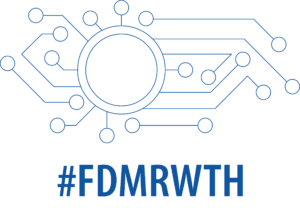
Source: Freepik
Open Access publications are becoming increasingly relevant in many disciplines, but at the same time they are still often viewed with differentiation or even scepticism. For scientific progress and further research, however, it is indispensable that a broad mass of people can access and use the results. We have therefore taken a closer look at the topic of Open Access.
What does Open Access mean?
Open Access refers to free access to scientific publications on the Internet. Such a publication allows users to read, download, save, link and print the published document free of charge.
The aim is to make scientific literature available to all interested parties, preferably without technical or legal barriers.
Advantages of Open Access
Since scientific research is predominantly publicly funded, it is only fair to make the results publicly available. However, this is not the only reason in favor of Open Access.
Free and fast access to research results accelerates the scientific communication process and thus increases efficiency in both research and innovation. This strengthens international and interdisciplinary collaboration and networking among researchers. In addition, Open Access is highly likely to increase the citation frequency and thus also the visibility of research results.
Another important point is that with Open Access, the exploitation rights are not assigned to a publisher, but remain with the author. The freedom to assign rights therefore lies with the authors themselves.
Ways to Open Access
There are two basic approaches to implementing Open Access: the green path and the golden path. In the golden road, the first publication of the scientific work takes place directly in Open Access. This can involve monographs, articles in journals, and contributions to conference or anthology proceedings.
The green path refers to the secondary publication of articles published by a publisher or journal on repositories and document servers, such as RWTH Publications. This can take the form of a preprint or postprint.
Licensing
With open access, it is up to the authors themselves to decide how freely they want to allow their work to be used. The granting of usage licenses regulates the rights of third parties in the use of research results.
With the widely used Creative Commons licenses, the conditions of subsequent use of research contributions can be easily defined.
The open-access.network platform recommends the use of the CC-BY license, as this permits a free, worldwide right of access to a publication and makes its subsequent use, e.g. by copying, distributing, transmitting, publicly reproducing or editing, possible for everyone. Correct information on authorship is obligatory.
Caution: If the corresponding rights have already been exclusively transferred to a publisher in advance, however, the granting of free licenses by authors is not permitted.
Learn more
Further information on the topic can also be found on the University Library’s website and a detailed list of reservations including counter-arguments can be found on the pages of open-access.network.
If you have any questions about Open Access publishing, please feel free to contact the Open Access team at the University Library. For general questions about Research Data Management, simply contact the IT-ServiceDesk. The RDM team looks forward to hearing from you.
For more information on RDM, please also visit the RWTH websites.
_____
Responsible for the content of this article are Lina-Louise Kaulbach and Sophia Nosthoff.





Leave a Reply
You must be logged in to post a comment.